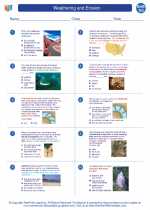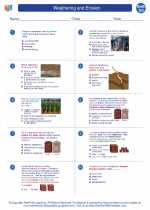Chordata
Chordata is a phylum of animals that includes vertebrates, as well as some invertebrate species such as sea squirts and lancelets. This diverse group is characterized by the presence of a notochord, a hollow nerve cord, pharyngeal slits, and a post-anal tail at some stage in their development. Here is a study guide to help you understand the key concepts within the phylum Chordata.
Key Concepts
- Notochord: A flexible rod that provides support along the length of the body.
- Nerve Cord: A hollow dorsal nerve cord that develops into the spinal cord in vertebrates.
- Pharyngeal Slits: Openings in the pharynx that may be used for filter-feeding, gas exchange, or communication.
- Post-anal Tail: A tail that extends beyond the anus at some point in the animal's development.
Classification
Chordates are classified into three subphyla:
- Urochordata (Tunicates): Marine invertebrates with a saclike body and a notochord in the larval stage.
- Cephalochordata (Lancelets): Marine filter-feeding animals with a notochord that persists throughout their life.
- Vertebrata (Vertebrates): Animals with a backbone, including fish, amphibians, reptiles, birds, and mammals.
Evolutionary Significance
The presence of a notochord and other chordate characteristics in the early fossil record suggests that chordates are among the most ancient of all animal groups. Their evolutionary history provides important insights into the development of complex body systems and the transition from aquatic to terrestrial environments.
Study Tips
To better understand the phylum Chordata, consider the following study tips:
- Compare and contrast the characteristics of the three subphyla of Chordata.
- Examine the evolutionary adaptations that have allowed vertebrates to thrive in diverse environments.
- Explore the embryonic development of chordates and the formation of key structures such as the neural tube and notochord.
- Investigate the ecological roles of different chordate species and their contributions to various ecosystems.
By engaging with these study tips and understanding the key concepts of Chordata, you can gain a deeper appreciation for the diversity and evolutionary significance of this fascinating phylum.
[Chordata] Related Worksheets and Study Guides:
.◂Earth Science Worksheets and Study Guides High School. Weathering and Erosion

 Worksheet/Answer key
Worksheet/Answer key
 Worksheet/Answer key
Worksheet/Answer key
 Vocabulary/Answer key
Vocabulary/Answer key
 Vocabulary/Answer key
Vocabulary/Answer key
 Vocabulary/Answer key
Vocabulary/Answer key
